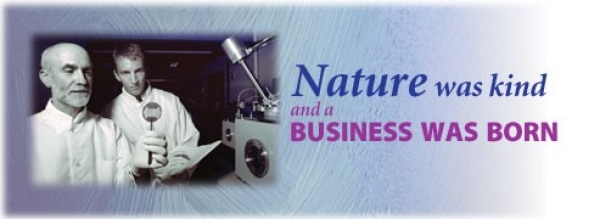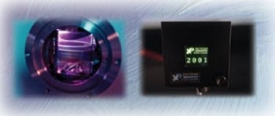by John Bach
Scientists call it the serendipity effect. In layman's speak, a serendipitous discovery is a happy accident, a revelation in the lab that often has no connection to the researcher's predicted outcome or hypothesis.
Perhaps the most renowned such breakthrough was made by Alexander Fleming in 1928 when he produced penicillin after recognizing the effect an errant mold spore had on a culture dish of bacteria. Velcro, Teflon and X-rays followed similar paths to everyday use. Their discoverers were not only fortuitous, they were keen enough to recognize the importance of the clues that nature provided.
University of Cincinnati professor Andrew Steckl still chuckles when he describes the day nature dropped an unmistakable scientific hint in his lap four years ago. Today that lucky strike has led to important new technology that underpins Steckl's high-tech venture company -- Extreme Photonix, housed in Bio/Start, the university's high-tech business incubator on East Campus. If the upstart's technology reaches the marketplace, it could jar the entire consumer electronics industry.
Though the scientist considers himself a career academic and only a "part-time entrepreneur," the solid-state display technology Steckl is developing may one day replace the plasma and liquid crystal screens used in big-screen TVs, laptop computers, personal digital assistants and countless other electronics.
The idea of a more rigid and longer lasting screen has investors drooling. Steckl's work has already attracted $2 million in funding from a private investor, the military and a state grant. Still, he isn't yet ready to trade his lab coat for a sports coat. Plenty of work remains.
The company was born last year, three years after Steckl, an Ohio Eminent Scholar at the College of Engineering, and some graduate students were studying the emission of infrared light when rare earth elements were added to gallium nitride. Instead of infrared, which isn't even visible to the naked eye, they witnessed a "beautiful green emission."
"We realized that we were seeing a higher energy transition," Steckl says. "It occurred in a very dramatic fashion. You saw it. It hit you. It was so obvious that you couldn't escape it.
"We changed our vector and said, if you can see a green emission, what would it take to see red. And we figured out which rare earths you have to introduce for that. We quickly obtained red emission, then blue."
Over time UC professor Andrew Steckl and his team achieved a wider spectrum of colors than that which can be seen on a television screen and soon had translated the breakthrough into many practical applications. Spurred by his more business-minded students, Steckl started the venture. Today, he is convinced their end product will succeed.
"It has very pure colors and very bright colors," Steckl says. "It is very rugged. You can drop it, and it will not break. It will last a long time, and you can take it out in the sunlight and still see it. These are all attributes that current flat-panel display technology doesn't meet."

 Past Issues
Past Issues
